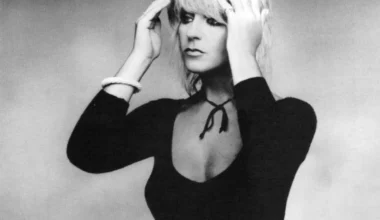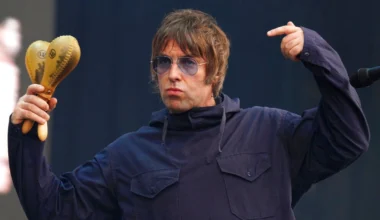How can a song make you cry? David Byrne, the former Talking Heads frontman, explains. “To have this effect on us, the song and delivery have to connect to us in ways we can relate to a tragic accident is not affecting. But a tragic accident that happens as a vet is driving to a reunion with his wife and child, now THAT’S heartbreaking.”
On his radio show, David Byrne lists various tragedies that hit close to home. “Dreams within reach, visible, graspable, but then dashed to a thousand pieces.” Not so moving, but the owner is a refugee who overcame impossible odds to achieve this dream. Only to have it snatched away by a rapacious landlord… We’re more involved now. Perhaps it’s the specifics that entice us?”
Then he concludes this horrifyingly sad invocation of all things heartbreaking with the question, “Why do we like this? Why do we enjoy sadness and heartbreak? I’m sure there are far more sad and tragic songs than happy ones. Is it possible that connecting and feeling the ache makes us feel better?”
To answer his question scientifically, enjoying musical sadness is an ingrained evolutionary response. Empathy is an important aspect of human survival. When we’re isolated and alone. We’re pretty puny and weak compared to the other fierce predators out there. Thus, caring for one another is essential for our continued progress. However, a few conservative capitalists could use this being explained to them.
This is why, according to neuroscientist Matthew Sachs, “one strong indicator of whether a person enjoys sad music is the degree to which they understand and relate to the emotions of others.” So, if a song has strong specifics, it delineates the emotional impact. It adds a level of potency that goes beyond mere minor chords. When we engage with art on an empathetic level. It fires up the region of our brain that stimulates imagination, creating a sense of release.
For Byrne and millions of others, ‘Mother’ a classic song by John Lennon accomplishes this admirably. Through Primal Scream therapy, John Lennon learned to go back into his life and address the unresolved abandonment he felt when his mother handed him over to her sister to raise him as a child.
In an interview with Uncut, Yoko Ono described the therapy. She said “just a matter of breaking the wall that’s there in yourself and coming out and letting it all hang out to the point where you start crying.” He was reverting to his childhood when he wanted to scream, “Mother!” He was able to return to his childhood, to that memory.”
He went on to say: “In the therapy, you feel every painful moment of your life. It’s excruciating, you are forced to realize your pain. It makes you wake up afraid with your heart pounding, it is yours and not the result of somebody up in the sky.”
Encouraging large groups to scream, cry, and convulse was a way to lift the malaise of a stiff upper lip and allow the atavistic side of life to emerge. This way of thinking resulted in a nearly caustic introspection on his solo masterpiece, John Lennon/Plastic Ono Band. This is exemplified by the song ‘Mother’ more than any other in his discography. The track exudes the cathartic release of confronting a long-repressed emotion.
A man screaming about his sad past in a pop song might not be all that moving. But when it’s the most famous musician on the planet extolling to the masses that even he is burdened with hardship from a tragic past he has worked so hard to overcome. The result is plenty of pretending they’ve just been cutting onions.








